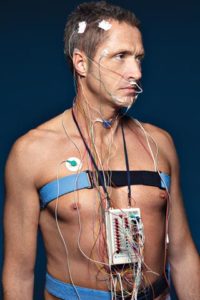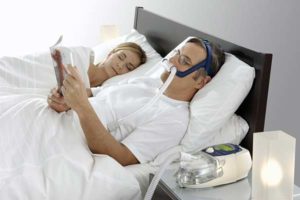 If you wake up choking in the middle of the night, are told that you babble or fight in your sleep, or have difficulty falling asleep, staying asleep, or staying awake—your doctor may recommend you have a sleep study done. A sleep study is done to diagnose several possible sleep-related conditions including Sleep Apnea/ Insomnia/Narcolepsy and Idiopathic Hypersomnia.
If you wake up choking in the middle of the night, are told that you babble or fight in your sleep, or have difficulty falling asleep, staying asleep, or staying awake—your doctor may recommend you have a sleep study done. A sleep study is done to diagnose several possible sleep-related conditions including Sleep Apnea/ Insomnia/Narcolepsy and Idiopathic Hypersomnia.Where is a Sleep Test Performed?
While some sleep studies may take place within a hospital, the room you’ll be staying in won’t look like your conventional post-surgical ward. Most rooms meant for sleep studies will look more like a bedroom or a hotel room and will be set to your temperature preference. This is also the case in Sleep Centers. Making the room look more warm and familiar will help a patient channel their natural sleeping patterns.
Whether your room is in a hospital or sleep center, you’ll usually have access to a personal bathroom. Nurses or technicians will be in the same general area, but in separate rooms with monitors where they can observe the study.
You are welcome to bring your own pajamas or pillow to make you feel as comfortable as possible.
What Happens During an Overnight Sleep Study?
When you enter the hospital or sleep center, after you’ve adjusted to you room, a technician will come and begin attaching you to a series of wires, sticky patches and electrodes. These are part of a Polysomnograph machine and measure things like brain activity, eye movement, heart rhythm and rate, blood pressure and oxygen in your blood. These wires may be annoying, but they will not hurt or shock you. Belts will also be placed around your chest and belly to measure movement, strength and duration of breathing.
As you sleep, information from your electrodes will be transmitted to the technician who may ask you to test the equipment by breathing, opening and closing your eyes, and re-adjusting wires.
Patients who are already aware of their sleep apnea will be asked to wear a CPAP mask, which is a small machine that gently blows air through the mask to keep
your airways open during the night.
This test can help confirm the diagnosis of sleep apnea and other sleep disorders.
In the morning, a technician may come and remove your equipment if you are not having the second part of a sleep study test (called a Multiple Sleep Latency Test.)
What Happens During a Multiple Sleep Latency Test? (MSLT)
This study is performed in the daytime, usually two hours after an overnight study. There may be an adjustment of your electrodes. When you wake up in the morning you may be asked to eat breakfast and get out of bed.
During an MSLT you’ll be asked to sleep and wake up, sleep and wake up about four or five times. This will help the technician determine if you have sleep disorders such as idiopathic hypersomnia or narcolepsy.
When Will I Get My Results for a Sleep Study?
Your technicians won’t be able to tell you the results of the study. They will have to be reviewed by the center or hospital’s sleep doctor, which may take a day or two. That center may also encourage you to make a follow-up appointment with your sleep doctor to discuss these results.
